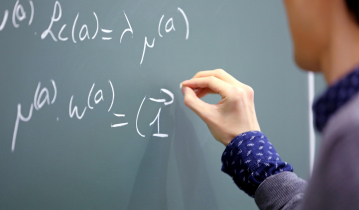 Hussein BIDAWI will defend his thesis on Friday 25 November at 14:30 (Manufacture des Tabacs Room MH 202)
Hussein BIDAWI will defend his thesis on Friday 25 November at 14:30 (Manufacture des Tabacs Room MH 202)
« Essays in Empirical Economics »
Supervisor Professor Patrick Fève
To attend the conference, please contact the secretariat Christelle Fotso Tatchum
Memberships are:
- Fabrice Collard, Toulouse School of Economics, Président du Jury
- Patrick Fève, Toulouse School of Economics, Directeur de thèse
- Frédérique Bec, Université de Cergy, Rapporteure
- Martial Dupaigne, Université de Montpellier, Rapporteur
Abstract :
This thesis contains three essays in empirical macroeconomics with an emphasis on exchange rate de- termination, the transmission of monetary policy to the exchange rate, commodity prices, and lastly on uncertainty.
The first chapter, co-authored with Aleksandra Babii, shows that exchange rates of a large and heterogeneous set of countries are connected to commodity prices. This overturns the exchange rate disconnect puzzle: the empirical fact that nominal exchange rates are not linked to their fundamentals. Importantly, the connection between exchange rates and commodity prices is independent of the patterns of trade in commodities. Strikingly then, this observed link is not restricted to the exchange rate of commodity ex- porters. Further, a novel empirical regularity about the link between exchange rates and commodity prices is uncovered. In particular, the connectedness of exchange rates to commodity prices exhibits important time variation: commodity prices and exchange rates are more linked in times of high volatility on financial markets as measured by VIX. At the same time, the explanatory power of commodity prices is itself robust to controlling for this measure of risk sentiment on financial markets. Our findings emphasize the need to study exchange rates and commodity prices beyond the traditional trade framework.
The second chapter uses a high-frequency event study analysis to examine the effect of monetary policy on the exchange rate before and after the effective lower bound, leveraging information in the whole of the yield curve. We find that the uncovered interest parity condition holds on impact, for both short and long maturities, and conditional on a monetary policy surprise. In addition, monetary policy has a larger impact on the exchange rate at the effective lower bound. Further, conventional and unconventional monetary policy transmits through the same channels the expected path of interest rates and the term premium, but the term premium becomes more important at the effective lower bound.
The third chapter, co-authored with Li Yu, studies aggregate uncertainty shocks, a second-order moment shock, and which can have large impacts on the real economy via affecting people’s expectations of future volatility that could drive their consumption and investment decisions today. Identifying uncertainty shocks is complicated by the need to distinguish between uncertainty about the future with realized volatility. This paper provides evidence that distinguishing between uncertainty about the future and sentiment merits further consideration. We do so by separately identifying an aggregate uncertainty shock from stock and gold prices and their volatilities. We find that uncertainty about the future causes a contraction in output and employment, but these two shocks have different effects on consumer sentiment, which builds the case for the need to separately and jointly identify sentiment and uncertainty shocks. Using a cross-section of assets might prove a fruitful avenue for future work.



